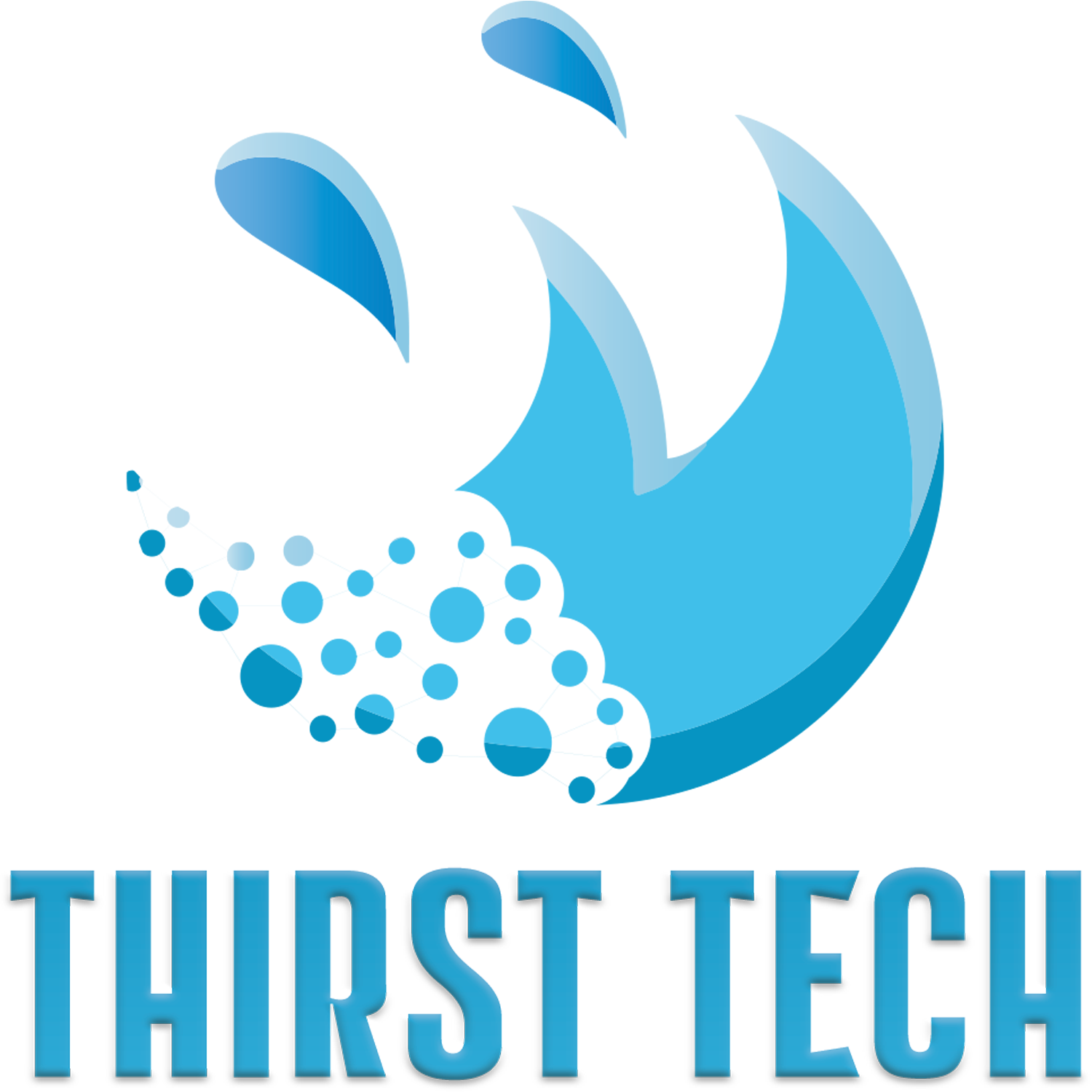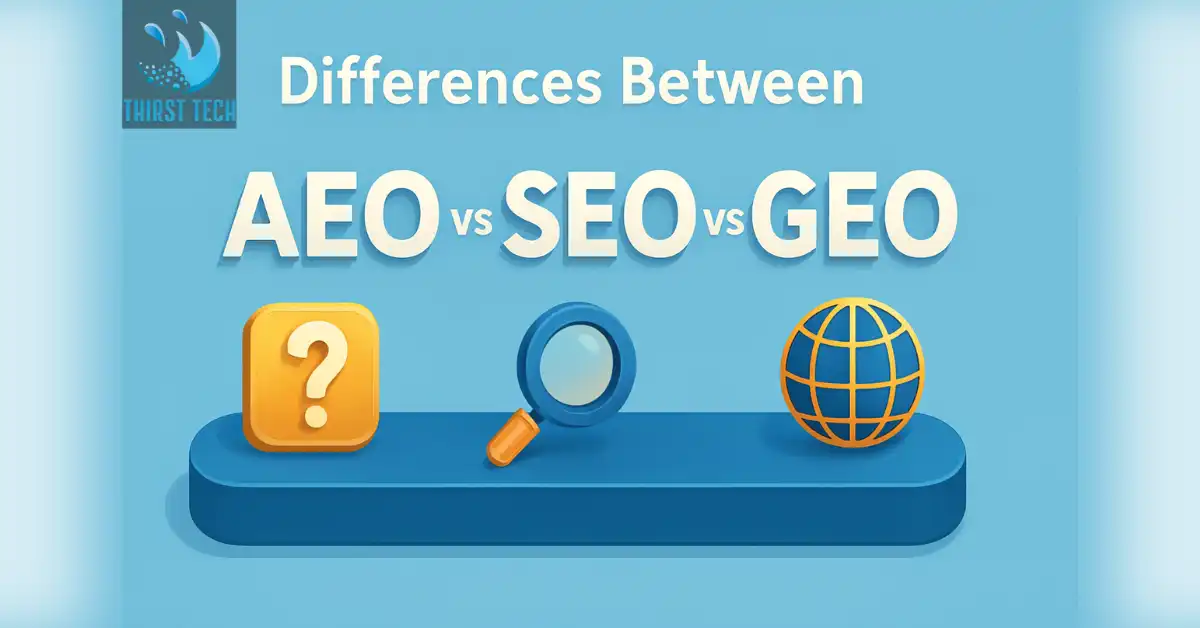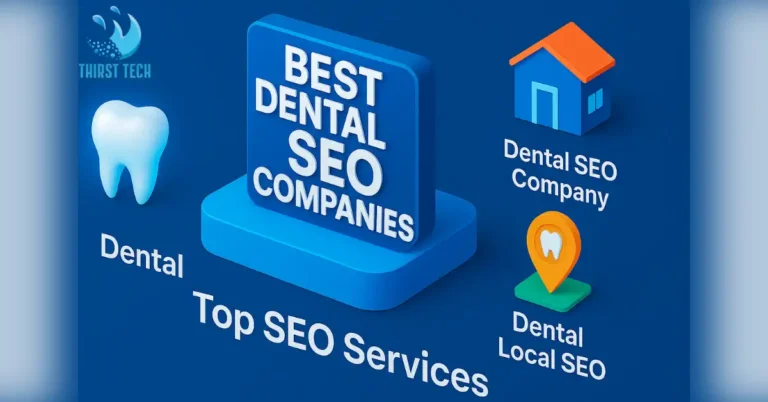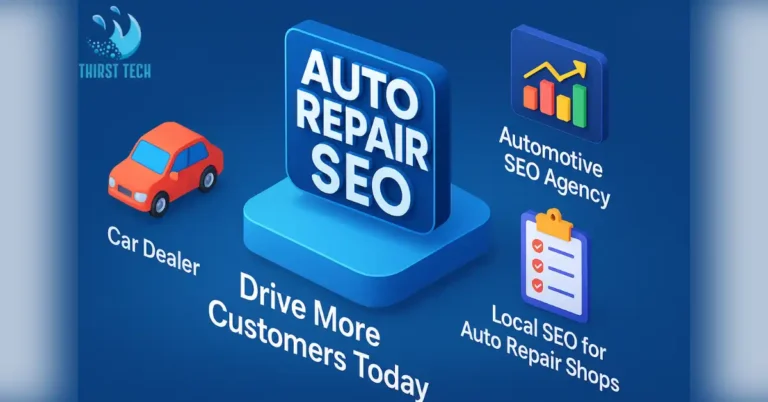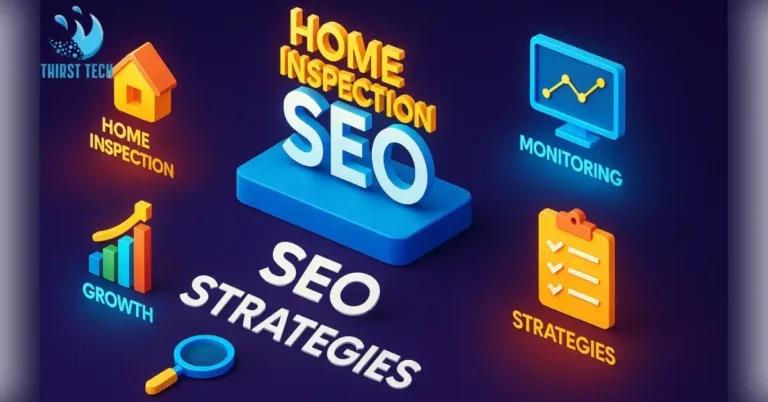What Is the Difference Between AEO vs SEO vs GEO?
AEO vs SEO vs GEO
In the current AI‑dominated world of digital marketing, knowing the subtle differences between AEO vs SEO vs GEO can result in the difference between getting buried or standing out at the absolute top of SERPs. With user behaviors moving in the direction of AI-based search and voice assistants, marketers must also evolve beyond traditional Search Engine Optimization techniques and leverage Answer Engine Optimization (AEO) and Generative Engine Optimization (GEO) tactics.
Answer engine optimization is about creating concise, direct answers in response to user questions, and AI platforms, such as ChatGPT or Google’s search generative experience, can scrape your content and pull it into featured snippets or position zero, effectively elevating your visibility without a user ever having to click through. On the other end of the spectrum, search engine optimization is critical for bolstering organic rankings across wide queries, while geostrategies mean your local readers can find you when they need you most.
Over the course of this post, we’ll explore:
- What AEO, SEO, and GEO each entail.
- How they differ and overlap in 2025’s search landscape.
- Tactical takeaways to optimize your content for Smart Technology, organic, and local search.
By the end, you’ll know exactly when to lean on AEO vs SEO vs GEO, and how to blend them for maximum impact so your brand stays visible, authoritative, and ready for the future of search.
Understanding AEO, SEO, and GEO
What Is Answer Engine Optimization (AEO)?
“Answer Engine Optimization (AEO)” refers to the manipulation of content so that answer-driven algorithms like Google Search Generative Experience (SGE), Microsoft’s Copilot, or ChatGPT can expose it as an answer to a user query. It’s also a step beyond just targeting the words that people use; it thinks about what questions your audience is going to type in and ensures that your content is simplified to brief, succinct answers that can be presented right at the top of Artificial Intelligence-driven search results.
- Core components include:
- Clear question‑and‑answer formatting (e.g., FAQs)
- Structured data/schema markup for featured snippets and rich results
- Concise, value‑first paragraphs that satisfy intent immediately.
- Why it matters: As more users turn to voice assistants and AI-driven search, AEO ensures brands appear in zero‑click results, boosting visibility and thought‑leadership without requiring a click.
What is Search Engine Optimization (SEO)?
Still to this day, optimizing for Search Engine Optimization (SEO) is the most fundamental digital‑marketing strategy to increase organic rankings within Google and Bing. Traditional SEO balances three pillars:
- On‑page SEO: Keyword research, content quality, internal linking, and schema markup
- Off‑page SEO: Backlink building, social signals, and online authority
- Technical SEO: Check detailed site audits, Site speed, mobile‑friendliness, and crawlability.
👉 While SEO still powers most organic traffic, its evolution includes optimizing for user experience, topical authority, and compatibility with generative AI overviews.
What Is Generative Engine Optimization (GEO)?
Generative Engine Optimization (GEO) is an emerging discipline focused on enhancing content visibility within AI‑generated responses and AI-powered search platforms. Unlike traditional SEO, which strives to drive clicks to websites, GEO aims for content to be cited or summarized by generative models. Think of your page as a source that powers a Smart Tech answer box or AI overviews.
- Key tactics include:
- Writing conversational, context‑rich content that generative engines can parse easily
- Leveraging structured data to signal content hierarchy and trustworthiness
- Monitoring AI platforms (e.g., Perplexity AI, Google’s SGE) for citation opportunities.
- Use cases: Brands that want to appear in chatbots like Bing Chat or power responses in voice search results.
AEO vs SEO vs GEO: Key Differences
Comparison Table
| Metric / Model | AEO (Answer Engine Optimization) | SEO (Search Engine Optimization) | GEO (Generative Engine Optimization) |
|---|---|---|---|
| Intent Focus | Precise user questions, direct answers | Keyword-driven, topic clusters | Contextual prompts for AI, narrative sources |
| Ranking Factors | Structured data/schema markup; Q&A formatting; voice compatibility | Backlinks, content quality, technical health (speed, mobile) | Conversational tone, semantic structure, citations by AI models |
| Typical KPIs | SERP features share, Voice search performance, Featured snippet rate | Organic visibility, Keyword rankings, CTR, Conversions | AI-Generated Visibility Rate (AIGVR); Conversational Engagement Rate (CER) |
| Time to Impact | Short to medium (weeks) | Medium to long (months) | Medium (depends on AI adoption) |
| Primary Tools | FAQs generator, Schema markup plugins, Voice analytics | SEO suites (Ahrefs, SEMrush, Moz), Master SEO Rank with Rapid URL Indexer | Conversational tone, semantic structure; citations by AI models |
Strategic Priorities in Each Model
AEO
- Question identification: Research high‑value user queries and map content to direct answers.
- Structured formatting: Implement FAQ schema and clear Q&A blocks to signal relevance to answer engines.
- Voice optimization: Ensure content reads naturally for voice assistants and conversational AI.
SEO
- Content depth & breadth: Build comprehensive topic clusters around target keywords to demonstrate authority.
- Technical excellence: Optimize page speed, mobile usability, and crawlability to satisfy modern ranking criteria.
- Link acquisition: Earn high‑quality backlinks to boost domain authority and referral traffic.
GEO
- AI citation readiness: Structure content so generative models can easily extract and reference it.
- Contextual richness: Provide conversational narratives and data points that enrich AI‑driven responses.
- Platform monitoring: Track how often content is surfaced in Bing Chat, Google SGE, or ChatGPT to refine AI‑centric tactics.
Overlaps and Divergences
- Shared elements: All three leverage structured data, content relevance, and user‑centric optimization to improve visibility across channels.
- Overlap: AEO and GEO both emphasize structured formatting and AI compatibility, while SEO and AEO share a focus on technical health (e.g., page speed).
- Divergence:
- AEO vs SEO: AEO de‑prioritizes click‑throughs in favor of zero‑click answers, whereas SEO aims to drive organic traffic to the site.
- SEO vs GEO: SEO focuses on ranking pages in search engine results, and GEO focuses on having content used and cited by AI‑powered search models.
- AEO vs GEO: AEO targets direct answers to discrete queries, GEO caters to broader generative contexts, and narrative pulls.
👉 By understanding these distinctions and intersections, marketers can craft a unified strategy that addresses user intent across traditional, AI‑driven, and local search paradigms, ensuring maximum reach and impact in 2025’s evolving search landscape.
When to Use AEO, SEO, or GEO

A. Choosing Based on Business Goals
- E‑commerce & FAQ‑Driven Sites:
For businesses with clear, question‑answer flows like product troubleshooting or pricing details, AEO ensures your content appears in featured snippets and position zero, satisfying user queries without additional clicks. - Content‑Rich Blogs & Publications:
Sites relying on in‑depth guides and topical authority should prioritize SEO to rank for a broad set of keywords and drive sustained organic traffic over months. - Local Service Providers & Brick‑and‑Mortar Outlets:
When foot traffic and proximity matter most, leverage GEO tactics such as Google Business Profile optimization and local schema to appear in AI-powered search results tied to specific regions. You can also check this guide on Boost Your Home Inspection SEO – Local SEO for Home Inspectors for deeper local SEO insights.
B. Budget and Resource Considerations
- Limited Budget & Quick Wins:
AEO often delivers faster impact (weeks) by repurposing existing content into concise FAQs with schema markup, requiring lower technical overhead. - Long‑Term Growth & Authority Building:
SEO demands ongoing investment in high‑quality content creation, backlink acquisition, and technical audits, ideal for brands with dedicated resources and patience for multi‑month ROI. - Innovative Positioning in AI Ecosystems:
GEO necessitates close monitoring of AI platforms (e.g., ChatGPT, Bing Chat, Google’s Search Generative Experience) and iterative content adjustments to meet generative models’ citation criteria.
C. Content Type and User Intent
- Direct Queries & Voice Search:
When audience behavior skews toward conversational interactions on voice assistants (e.g., Google Assistant, Siri), AEO helps you secure concise answers and voice search results. - Broad Informational or Commercial Queries:
For users researching purchases or deep dives, SEO supports ranking across multiple search engine results through comprehensive articles and schema markup. - AI‑Driven Overviews & Chatbots:
Brands wanting to feed AI overviews and generative search with reliable data should adopt GEO, structuring content so that AI models can readily digest and cite it in narrative answers.
Best Practices for Each Strategy
A. AEO Best Practices
- Implement FAQ and How‑To Schema
- Use structured data (FAQPage, HowTo) to mark up question‑answer pairs, enabling answer engines to recognize and surface concise responses.
- Craft Conversational, Intent‑Focused Content
- Frame content around specific user queries (e.g., “How to fix X?”), with direct, bullet‑style answers in the first 50–100 words.
- Optimize for Voice and Mobile
- Ensure readability with short sentences and clear headings; test voice‑assistant delivery via tools like Speakable or Google’s Voice Search Simulator.
- Monitor Zero‑Click Metrics
- Track featured snippet impressions and voice‑search share using tools such as SEMrush Sensor or Ahrefs’ SERP Features report.
B. SEO Best Practices
- Deep Keyword Research and Semantic Clustering
- Leverage tools like Google Keyword Planner, SEMrush, or Ahrefs to identify primary and related keywords; group them into topic clusters to cover comprehensive user intent.
- Optimize Technical Foundations
- Improve page speed with Core Web Vitals (LCP ≤ 2.5 s), ensure mobile‑first design, and implement proper XML sitemaps & robots.txt rules.
- Earn High‑Quality Backlinks
- Focus on editorial backlinks from authoritative sites via guest posts, data‑driven studies, and resource pages; disavow toxic links proactively.
- Leverage Schema for Rich Results
- Apply structured data (Article, Breadcrumb, Review) to enable stars, sitelinks, and other SERP enhancements.
C. GEO Best Practices
- Structure Content for AI Extraction
- Use clear headings (H2/H3) and bullet points to make data digestible for generative models; include concise definitions and statistics early in the content.
- Maintain Authoritativeness and Trustworthiness
- Cite reputable sources, include author bios with credentials, and link to official data (e.g., government or industry reports) to signal E‑A‑T.
- Optimize for Generative AI Platforms
- Monitor AI citation in platforms like Google’s Search Generative Experience and Bing Chat; iterate content based on which passages are surfaced.
- Use Conversational Tone and Contextual Examples
- Write in a narrative style with real‑world scenarios and case studies, aiding AI models in creating coherent, human‑like answers.
Tools and Resources
| Category | Tool / Resource | Purpose & Notes |
|---|---|---|
| AEO | Google’s Schema Markup Testing Tool | Validate the FAQ Page, HowTo, and Speakable structured data for answer engine optimization with Creaitor.ai. |
| AnswerThePublic | Discover high‑value user queries and trending question formats to power your Q&A content with Surfer SEO. | |
| Profound AI Visibility Tracker | Monitor how often and where your brand appears in AI answers, including Google SGE and ChatGPT. Innovative Positioning in AI Ecosystems, you can get help from Virtual Assistant SEO. | |
| SEO | SEMrush | All‑in‑one search engine optimization suite for keyword research, site audits, and backlink analysis with Backlinko. |
| Ahrefs | Deep dive into backlink profiles, organic traffic estimations, and content gap analysis for stronger SEO strategies. | |
| Google Search Console | Free insights on technical health, indexing status, and search results performance directly from Google. | |
| GEO | Mangools AI Search Grader | Evaluate your brand’s visibility within AI‑driven platforms like ChatGPT, Claude, and Google Gemini. |
| Perplexity Analytics | Track citation frequency and context in generative AI responses to refine your generative engine optimization. | |
| Bing Chat Analytics | Analyze how often your content surfaces in Bing Chat and optimize for conversational prompts. |
Case Studies
To illustrate how AEO vs SEO vs GEO strategies play out in real‑world scenarios, let’s explore three brands that leveraged each approach to achieve distinct wins in 2025.
1. Brand A: Driving Engagement with AEO
Context: A software‑as‑a‑service (SaaS) provider noticed that their support pages weren’t generating leads, despite high traffic.
Approach:
- Converted top support FAQs into clearly marked Q&A blocks with FAQPage schema.
- Added concise, bulleted answers within the first 50 words of each article.
- Monitored featured snippet impressions and voice‑search triggers via SEMrush Sensor.
Outcome: - Featured snippet share rose from 2% to 18% in three months.
- Voice‑search impressions climbed 30%, leading to a 12% lift in trial sign‑ups.
2. Brand B: Scaling Organic Traffic with SEO
Context: An e‑commerce retailer specializing in outdoor gear struggled to rank for competitive category terms.
Approach:
- Conducted deep keyword research to build topic clusters around “hiking boots,” “camping tents,” and “backpacks.”
- Overhauled technical SEO: improved Core Web Vitals (LCP < 2.5 s), mobile‑first design, and XML sitemap coverage.
- Executed a guest‑post campaign, earning 40 editorial backlinks from reputable adventure blogs.
Outcome: - Organic sessions grew 65% year‑over‑year.
- Average position for target keywords improved from #22 to #8 in six months.
- Conversion rate on category pages increased by 22%.
3. Brand C: Capturing AI Citations with GEO
Context: A health information publisher aimed to have its content cited in AI overviews and chatbots.
Approach:
- Structured health guides with clear H2/H3 headings and bullet‑pointed statistics.
- Embedded authoritative citations (e.g., WHO, CDC) and author bios to boost trustworthiness.
- Tracked citation frequency in Bing Chat and Google’s SGE via Mangools Artificial Intelligence Search Grader.
Outcome: - Cited in 24% of Bing Chat health queries within four months.
- Appeared in Google SGE overviews for “flu vaccine side effects,” driving a 15% lift in organic visits.
- Enhanced brand authority, reflected in a 10% uptick in newsletter sign‑ups. E.g., for insights on local authority and trust signals, check out this piece of content: Best Dental SEO Companies.
Conclusion – AEO vs SEO vs GEO
As digital channels evolve in 2025, AEO vs SEO vs GEO is crucial for brands seeking visibility across standard and AI‑powered landscapes. AEO – Answer Engine Optimization focuses on getting the clear and to-the-point answers in the featured snippets, voice search, and Intelligent Tech chat interfaces to be immediately visible and don’t need any clicks to appear in SERPs. SEO is still the bedrock for sustainable long‑term organic traffic, utilising keyword research, technical best practice, and authoritative backlinks to rank in search engines.
Meanwhile, Generative Engine Optimization (GEO) focuses on positioning your content as a source for AI overviews and narrative responses in platforms like ChatGPT and Google’s search generative experience, tracked via tools such as Peec AI and Profound Machine Intelligence Visibility Tracker. By blending AEO’s precision, SEO’s depth, and GEO’s cutting‑edge AI citation strategies, businesses can secure top placement whether in zero‑click answers, organic listings, or generative summaries, staying ahead in the rapidly shifting future of search.
FAQs about AEO vs SEO vs GEO
What is the main difference between AEO and SEO?
AEO optimizes for direct answers and zero‑click visibility in AI‑powered responses, whereas SEO focuses on driving organic traffic through ranking signals like backlinks, content depth, and technical health.
How does GEO complement traditional SEO efforts?
GEO ensures that content is structured and semantically rich so generative AI platforms (e.g., ChatGPT, Google SGE) can easily extract and cite it, adding an AI‑centric layer to traditional SEO that targets narrative responses.
Can small businesses benefit from AEO?
Yes. By repurposing existing FAQs and applying the FAQ Page schema, small businesses can achieve featured snippets and voice‑search wins quickly and cost‑effectively, often within weeks.
Which KPIs should marketers track for GEO success?
Marketers should monitor AI‑Generated Visibility Rate (AIGVR), citation frequency in AI chat windows, and Conversational Engagement Rate (CER) using tools like Perplexity Analytics and Peec AI.
Is there overlap between AEO, SEO, and GEO?
Absolutely. All three rely on structured data, content relevance, and user‑centric optimization, but they diverge in their primary targets: zero‑click AI answers (AEO), broad organic rankings (SEO), and generative AI citations (GEO).
👉 Ready to elevate your digital presence across AI, organic, and local search?
- Audit Your Content: Identify top FAQs and pages to optimize for AEO today.
- Strengthen Your SEO Foundation: Invest in technical health, keyword clustering, and quality backlinks.
- Embrace GEO: Use tools like Peec AI and Profound AI Visibility Tracker to secure citations in AI‑powered search.
Share your experiences or questions in the comments below, and subscribe to our newsletter for the latest insights on AEO vs SEO vs GEO, emerging Smart tools, and the ever‑evolving search landscape of 2025!
